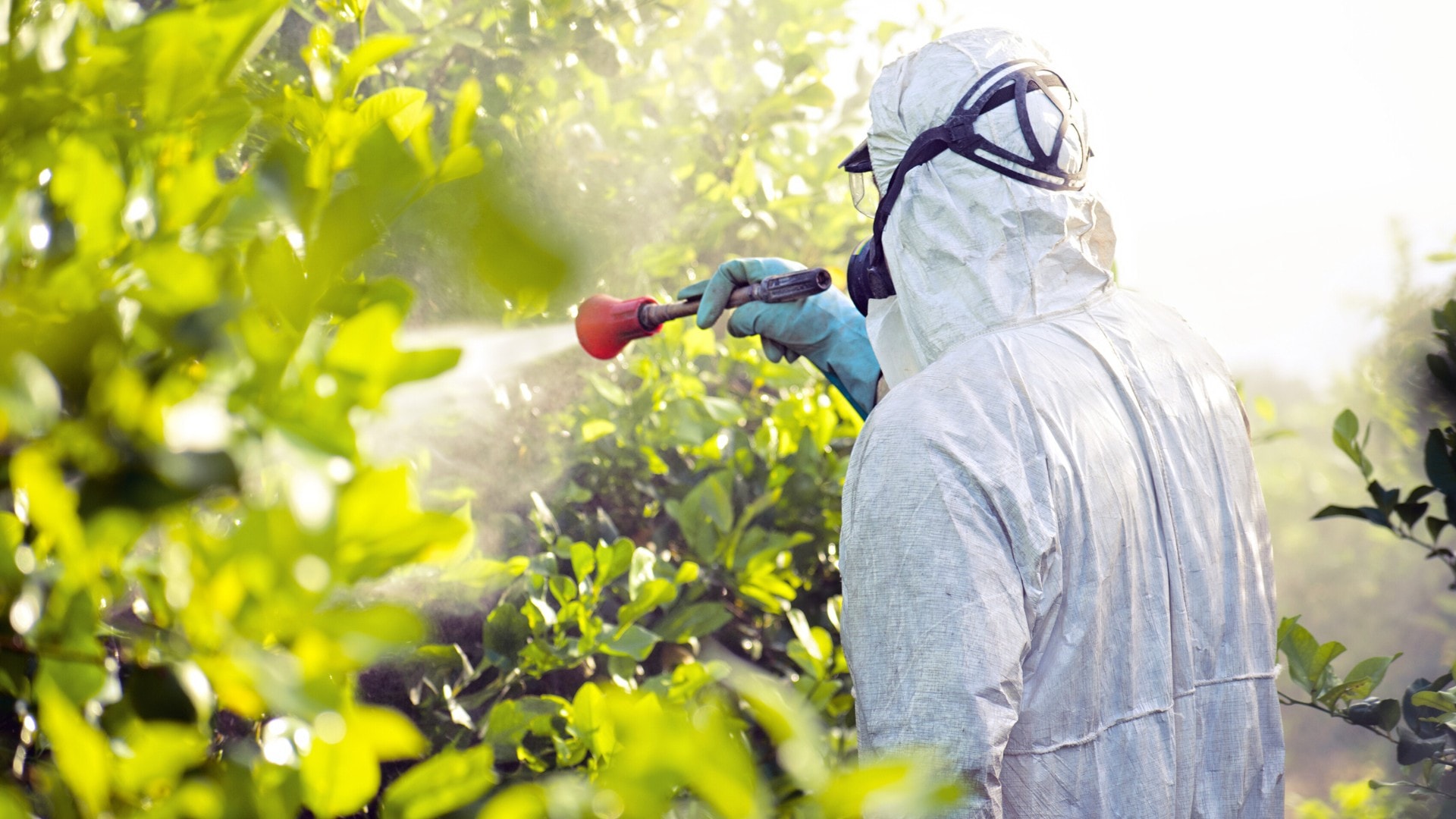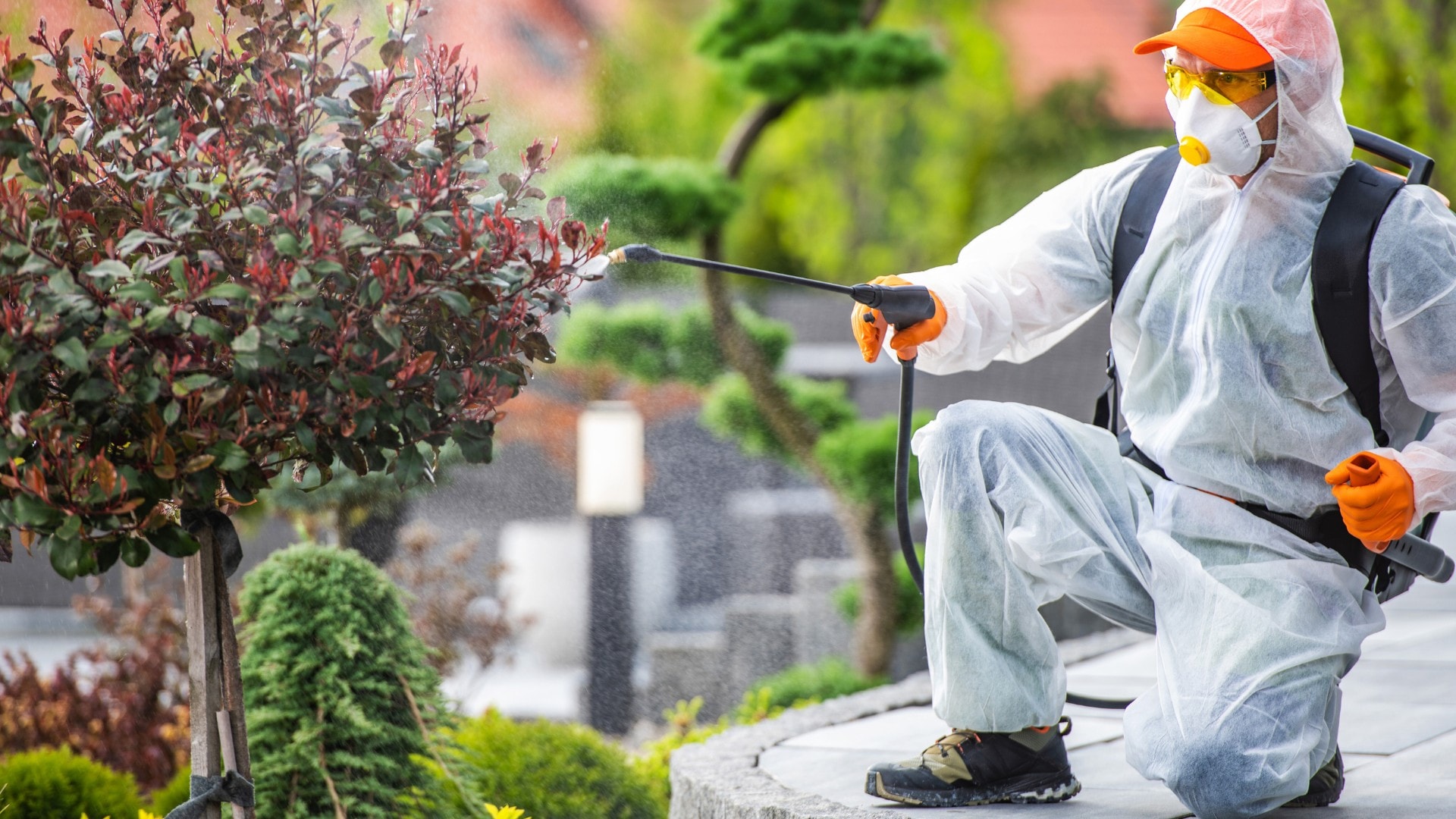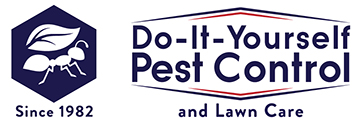The topic of neonicotinoid insecticides generates considerable debate among pest management professionals and environmental advocates alike. These chemicals have been under increasing scrutiny due to their potential impacts on non-target species, particularly pollinators like bees. With California's recent enactment of Assembly Bill 363, the state has taken a decisive step to limit the use of certain neonicotinoids, marking a significant regulatory shift in pest control practices.
This blog post explores the implications of NeoNic restrictions for pest control operators and consumers. By examining both the operational adjustments required for businesses and the potential changes in pest control outcomes for homeowners, we aim to provide a comprehensive guide to navigating this new landscape. Whether you're a professional in the industry or a homeowner concerned about pest management, understanding these changes is crucial.

Understanding California Assembly Bill 363
Assembly Bill 363 represents a landmark in pesticide regulation, specifically targeting neonicotinoid insecticides and neonicotinoid seed treatments known for their impact on beneficial insects and pollinating insects, like honey bees and wild bees. In tests worldwide, nearly three quarters of of honey samples contained traces of neonics. Neonics are a class of systemic pesticides that work by irreversibly binding to insect nicotinic acetylcholine receptors.
In 2005, the patent expired on seven neonicotinoids, allowing companies to create generic versions of these products. Since these generics have been on the market, neonicotinoid usage has increased in the U.S. for crop seeds treated with it, such as corn.
The bill restricts nonagricultural outdoor use of these chemicals, effective January 1, 2025. This regulation encompasses the active ingredients Imidacloprid, Clothianidin, Thiamethoxam, and Dinotefuran, which are commonly found in various pest control products.
Why It's Necessary That We Discuss The Neonics Restrictions
The primary goal here is to explain the effects of these restrictions on pest control operators and end consumers in California. With a detailed analysis of the operational shifts necessary for compliance and the potential changes in pest management outcomes, both professionals and homeowners can take informed actions.
Importance for Professionals and Residents
For pest control operators, adapting to these changes involves more than simply removing products from their offerings. It's about re-evaluating strategies and ensuring customer satisfaction through education and engagement. Meanwhile, homeowners must adjust their expectations and practices regarding pest management, understanding the broader impact on their environment and health.

Impact on Pest Control Operators
The restrictions introduce several challenges and opportunities for pest control professionals. From altering product inventories to revamping operational strategies, businesses will need to rethink their approach to pest management.
Changes in Product Inventory and Usage
Neonicotinoid insecticides, under various trade names like Merit and Confidor, have been staples in pest control arsenals. Their effectiveness against a wide range of pests, coupled with relatively low application rates, made them popular choices for both residential and commercial settings. However, with the new restrictions, pest control companies must pivot to alternative solutions.
Pest control operators will need to familiarize themselves with other classes of insecticides, such as pyrethroids or biological controls, which might require different application techniques or schedules. The transition period will involve significant inventory adjustments and the phasing out of existing stocks in compliance with state guidelines.

Insecticides with Imidacloprid will be affected in California by Assembly Bill 363, starting on January 1, 2025.
Here's a list of Active Ingredients Affected by the Restrictions
-
Imidacloprid
-
Clothianidin
-
Thiamethoxam
-
Dinotefuran
-
Acetamiprid
-
Nitenpyram
-
Thiacloprid
Trade Names for Each Active Ingredient
1. Imidacloprid
-
Merit
-
Admire
-
Gaucho
-
Premise
-
Advantage (for pet flea control)
-
Confidor
-
Kohinor
-
Hachikusan
-
Premise
-
Prothor
-
Temprid (in combination with beta-cyfluthrin)

2. Clothianidin
-
Poncho
-
Belay
-
Arena
-
Clutch
-
Aloft (in combination with bifenthrin)
-
Acceleron
-
NipsIt INSIDE

3. Thiamethoxam
-
Cruiser
-
Platinum
-
Actara
-
Helix
-
Meridian
-
Centric
-
Optigard
-
Tandem (in combination with lambda-cyhalothrin)

4. Dinotefuran
-
Safari
-
Venom
-
Scorpion
-
Greenlight Tree & Shrub Insect Control
-
Alpine
-
Zylam
5. Acetamiprid
-
Transport GHP
-
Transport Mikron
-
Endzone Insecticide Sticker
-
Assail 30 SC
-
TriStar 8.5 SL Insecticide
6. Nitenpyram
-
Nitenpyram products are primarily used in the form of a pill to control fleas in dogs and cats.
7. Thiacloprid
-
Calypso 40%
-
Calypso 70 WG
Please bear in mind that although this list features some of the most common trade names, it is not all-inclusive. These active ingredients are often found in different formulations and may be sold under various brand names by different manufacturers for various purposes, such as agricultural use or residential pest control. Some products might combine these neonicotinoid pesticides with other insecticides that are not neonicotinoids. If any listed neonicotinoid active ingredients are present, these combination products are also subject to the new restrictions.
Pest control operators and consumers should be informed that:
Products with these active ingredients are prohibited for nonagricultural outdoor use in California starting January 1, 2025.
The restrictions apply to both professional and consumer products.
There are specific exceptions, such as for indoor pest control, pet flea treatments, and certain agricultural uses.
Any remaining stock should be disposed of according to state guidelines.
Alternatives to neonicotinoids, like other insecticide classes, biological controls, and integrated pest management strategies, are being adopted more widely.

Pest control companies will need to educate their customers about what the restrictions mean for them.
Operational Adjustments for Pest Control Companies
Adhering to the new regulations will necessitate operational changes beyond product substitution. Companies must invest in training staff on the use of alternative pesticides and the principles of Integrated Pest Management (IPM). IPM emphasizes ecological considerations, utilizing multiple control methods to achieve sustainable pest management.
Furthermore, businesses may explore partnerships with manufacturers of alternative products to secure competitive pricing and access to the latest technologies. These partnerships can also facilitate knowledge sharing and skill development, ensuring operators remain at the forefront of pest control innovations.
Customer Education
As pest control strategies evolve, so must the communication strategies employed by companies. Educating customers on the changes brought about by the NeoNic restrictions is imperative for maintaining transparency and trust.
Effective communication involves explaining why certain products have been discontinued and the benefits of alternative methods. By utilizing newsletters, social media, and direct consultations, businesses can engage customers in meaningful conversations about environmental stewardship and the advantages of adopting new pest control practices.
Potential Short-term Business Challenges
The transition to alternative products may present short-term financial and operational hurdles for pest control companies. Alternative solutions could be more costly or less immediately effective than neonicotinoids, potentially affecting profit margins.
To mitigate these challenges, businesses might consider optimizing their service routes, adopting more efficient scheduling systems, or leveraging digital tools to streamline operations. Additionally, offering bundled services or loyalty programs could incentivize customers to remain engaged during the transition period.

Impact on Consumers in California
Homeowners and other end consumers will find themselves navigating changes in pest control effectiveness and costs. Understanding these impacts is essential for making informed decisions about pest management.
Changes in Pest Control Effectiveness
The shift away from neonicotinoids may initially affect the perceived effectiveness of pest control services. Homeowners accustomed to rapid pest eradication might observe differences in how quickly alternative solutions work.
Consumers should adjust their expectations, recognizing that while some solutions might take longer to show results, they offer long-term benefits for both pest management and environmental health. Engaging with pest control providers to understand the nuances of new methods can facilitate a smoother transition.
Potential Cost Increases
The restriction's implications extend beyond operational changes; they may also affect the cost of pest control services. Factors contributing to increased costs include higher prices for alternative products and potential increases in labor costs associated with training and skill development.
Homeowners can manage these expenses by exploring flexible service plans, bulk purchasing options, or DIY pest control methods. Some pest control companies may offer educational resources or workshops to empower consumers with the knowledge needed for effective self-management.
Potential Environmental and Health Benefits
The shift away from neonicotinoids aligns with broader environmental and health initiatives. By reducing reliance on chemicals known to adversely affect pollinating insects and other beneficial insects (particularly with sucking insects), the restrictions support biodiversity and ecosystem health.
This regulatory change also presents potential health advantages for residents, as reduced exposure to certain pesticides may lower the risk of associated health issues. Consumers should be aware of these benefits when considering pest control options and engage with providers who prioritize environmentally responsible practices.
Increased Awareness and Education
The NeoNic restrictions serve as an impetus for growing awareness around pesticide usage and the exploration of alternative methods. Homeowners are encouraged to educate themselves about the implications of pesticide regulations and the importance of supporting sustainable practices.
With an increased understanding of environmental impacts, consumers have the opportunity to make informed choices about pest control. Engaging with informational resources, community forums, or workshops can enhance knowledge and empower residents to contribute to broader conservation efforts.
DIY Pest Control Challenges
While some consumers may consider DIY pest control as an alternative to professional services, several challenges may arise. The absence of neonicotinoids could limit the effectiveness of readily available consumer products, necessitating a greater understanding of pest behaviors and control methods.
For those interested in pursuing DIY options, accessing reliable resources is key. Many pest control companies and environmental organizations offer guides, tutorials, and support networks to assist homeowners in managing pest issues effectively while minimizing environmental impact.

The Neonics restriction is likely to drive innovation in the pest control industry.
Long-term Implications
Beyond immediate changes, the NeoNic restriction has potential long-term implications for pest control innovation, market dynamics, and environmental health.
Innovation in Pest Control
The restriction of neonicotinoids is likely to drive research and development within the pest control industry. Companies are incentivized to develop safer, more effective alternatives to toxic pesticides that meet regulatory standards while offering improved outcomes.
These restrictions present an opportunity for entrepreneurs and startups to introduce novel solutions, such as biopesticides or advanced monitoring technologies. These innovations may not only replace traditional chemical controls but also enhance the overall sustainability of pest management practices.
Shift Towards Integrated Pest Management (IPM)
Integrated Pest Management (IPM) emphasizes a holistic approach to managing pests through a combination of physical, biological, and chemical methods. This approach aligns with the goals of the NeoNics restrictions and offers several advantages, including reduced pesticide use, minimized environmental impact, and enhanced long-term effectiveness.
Pest control operators and consumers alike are encouraged to explore IPM strategies as a way to balance pest control needs with ecological considerations. Educational resources, workshops, and collaborations with agricultural extension services can facilitate the adoption of IPM practices.
Market Changes
The NeoNic restrictions may catalyze shifts in the pest control industry landscape. Established companies may need to adapt their business models, while new entrants could emerge with innovative approaches and technologies.
These market changes present opportunities for collaboration, investment, and growth. Companies that prioritize sustainability, transparency, and customer education are likely to thrive in this evolving landscape, capturing the attention of environmentally conscious consumers.
Potential Environmental Improvements
Over the long term, the NeoNic restrictions could contribute to improvements in biodiversity and ecosystem health. With reduced exposure to neonicotinoids, populations of pollinating insects and other beneficial organisms may recover, supporting a broader ecological balance.
Responsible pest management practices, coupled with increased awareness, can play a role in conserving natural resources and promoting a healthier environment for future generations. Professionals and consumers alike have a stake in fostering a culture of environmental stewardship.
How Will the NeoNics Restrictions Influence the Cost of Pest Control Services in California
The NeoNic restrictions will likely have varying effects on the cost of pest control services. Understanding the factors that drive potential cost increases, as well as those that may mitigate them, provides insight into the financial implications for both businesses and consumers.
Factors Driving Potential Cost Increases
Several factors contribute to the potential increase in pest control service costs following the new restrictions:
-
More Expensive Alternative Products: The transition to alternative pesticides may involve higher costs for operators, impacting service pricing.
-
Increased Labor Costs: Training staff on new products and techniques necessitates additional investment in time and resources, contributing to staffing expenses.
-
Increased Operational Costs: Adapting to new regulations and exploring innovative solutions may require significant operational adjustments, influencing overall business expenses.
Factors That May Mitigate Cost Increases
Despite these challenges, certain factors may help mitigate potential cost increases:
-
Competition and Market Pressures: The competitive nature of the pest control industry may encourage businesses to maintain competitive pricing, even amidst regulatory changes.
-
Efficiency Improvements: Implementing efficient practices, optimizing service routes, and leveraging technology can reduce operational costs and enhance profitability.
-
Bulk Purchasing and Industry Partnerships: Establishing partnerships with manufacturers and suppliers can lead to favorable pricing arrangements, benefiting both businesses and consumers.
Long-term Price Outlook
While short-term cost fluctuations are possible, the long-term price outlook for pest control services will depend on industry dynamics and market forces. Continued advancements in technology and innovation may contribute to more cost-effective solutions over time.
Pest control operators are encouraged to explore strategies that ensure affordability while maintaining high-quality service delivery. For consumers, engaging with providers that prioritize transparency, sustainability, and customer education can lead to informed decision-making and a positive pest management experience.
Other States Affected By Neonics Restrictions
In addition to California beginning restrictions on Neonics, a handful of other states have restrictions as well.
Colorado: Restricted neonics to licensed applicators starting July 1, 2023
Connecticut: Classified neonics as "restricted use" in 2016
Maine: Banned neonics for outdoor residential use starting September 1, 2022
Maryland: Restricted consumer use starting January 1, 2018
Massachusetts: Restricted retail sales and limited use to licensed applicators starting July 1, 2022
Minnesota: Banned neonics on state-managed lands in 2023
Nevada: Banned lawn and garden uses starting January 1, 2024
New Jersey: Prohibited nonagricultural outdoor use starting October 31, 2023
New York: Reclassified neonics as "restricted use" starting January 1, 2023
Rhode Island: Restricted use to licensed applicators in 2022
Vermont: Restricted use starting in 2019
Washington: Passed legislation in 2024 to restrict residential use
The Overall National Landscape on Neonics Restrictions
The restrictions on neonicotinoids are not just limited to individual states. There have also been efforts at the federal level to regulate the use of these pesticides.
In 2019, the EPA took steps regarding neonicotinoids by proposing interim decisions for five such pesticides: acetamiprid, clothianidin, dinotefuran, Imidacloprid, and thiamethoxam. They also suggested new strategies to minimize ecological risks, especially to pollinators.
By January 2023, the EPA published final biological evaluations for clothianidin, Imidacloprid, and thiamethoxam, revealing that these chemicals are likely to negatively impact certain endangered species and their habitats.
As of 2024, there is no federal-level ban or complete phase-out of neonicotinoids in agriculture. Instead, the EPA is actively:
-
Assessing the risks and benefits linked to neonicotinoid usage
-
Enforcing strategies to mitigate risks to pollinators and other non-target species
-
Reviewing new data and scientific findings as part of its ongoing evaluation process
Additionally, many countries around the world have implemented restrictions on neonics, including Canada, Australia, and several European nations.
The global trend towards reducing pesticide usage in agriculture and promoting more sustainable pest management practices is a strong indication of the impact that these chemicals can have on ecosystems and public health.
Final Thoughts on Neonics Restrictions
The NeoNic restrictions in California mark a pivotal moment in pest control regulation, offering both challenges and opportunities for professionals and consumers. By understanding the impacts on product usage, operational dynamics, and consumer expectations, stakeholders can navigate this evolving landscape with confidence.
For pest control operators, the transition to alternative methods requires adaptability, investment in training, and effective communication with customers. Meanwhile, consumers benefit from a greater understanding of environmental impacts, empowering them to make informed choices about pest management.
Ultimately, the NeoNic restrictions in California signify a broader commitment to sustainable practices, responsible stewardship, and environmental conservation. By engaging with these changes, both professionals and homeowners can contribute to a healthier, more balanced ecosystem while fostering innovation and growth within the pest control industry.









